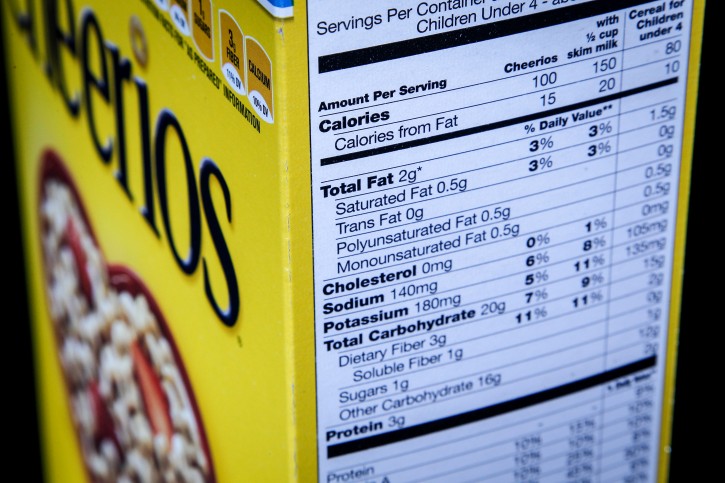 Washington – Nutrition facts labels on food packages are getting a long-awaited makeover, with calories listed in bigger, bolder type and a new line for added sugars.
Washington – Nutrition facts labels on food packages are getting a long-awaited makeover, with calories listed in bigger, bolder type and a new line for added sugars.
Subscribe to our Daily Roundup Email
And serving sizes will be updated to make them more realistic — so that a small bag of chips won’t count as two or three servings, for example.
First lady Michelle Obama is expected to announce final rules for new labels in a speech Friday morning as part of her “Let’s Move!” campaign to combat childhood obesity. The changes were proposed by the Food and Drug Administration two years ago and are the first major update of the labels since their creation in 1994. They are now found on more than 800,000 foods.
“This is going to make a real difference in providing families across the country the information they need to make healthy choices,” the first lady said in a statement.
The overhaul comes as science has changed in recent decades. While fat was the focus in the 1990s when the labels first were created, these days there is more concern about how many calories people eat. The calorie listing will now be much larger than the rest of the type on the label, making it hard to overlook.
Serving sizes will also be easier to see, listed at the top of the graphic. And it will be easier to discern how many servings are in a container as part of an attempt to revise often misleading serving sizes.
Calculations for serving sizes will also be revised. The idea behind listing a whole package of food, or a whole drink, as one serving size isn’t that people should eat more; it’s that they should understand how many calories are in what they are actually eating. The FDA says that by law, serving sizes must be based on actual consumption and not ideal consumption.
Nutrition advocates have long asked for the added sugars line on the label because it’s impossible for consumers to know how much sugar in an item is naturally occurring, like that in fruit and dairy products, and how much is added by the manufacturer. Think an apple vs. apple sauce, which comes in sweetened and unsweetened varieties.
The labels will also include a new “percent daily value” for sugars, meaning the percentage of a person’s recommended daily intake of added sugars in that particular food item. New dietary guidelines announced this year recommend that people get no more than 10 percent of calories daily from added sugars. Since the calculations are based on an average diet of 2,000 calories, that means people should get no more than 200 calories of added sugars a day.
Michael Jacobson, president of the advocacy group Center for Science in the Public Interest, says it’s currently impossible for consumers who look at the labels to know how much sugar in foods is added and how much fits into a reasonable diet.
“Besides helping consumers make more informed choices, the new labels should also spur food manufacturers to add less sugar to their products,” Jacobson said.
Other changes to the labels: They must now list levels of potassium and Vitamin D, two nutrients Americans don’t get enough of. Vitamin C and Vitamin A listings are no longer required but can be included. Iron and calcium will stay.
The food industry has two years to comply.
Reaction to the labels from food companies has been mixed since they were first proposed. While some companies have fought the new line for added sugar, others have supported it. The Grocery Manufacturers Association, which represents the food industry’s largest companies, has supported the larger print for calories.
“This update is timely as diets, eating patterns and consumer preferences have changed dramatically since the Nutrition Facts panel was first introduced,” said GMA’s Leon Bruner.

When are they finally put the big bad Carbs on the Do Not Eat list instead of fat! they say that fat is no longer the main concern! I lost many a pound and feel much better after kicking what the govmn’t says eat 350 grams of, while it should only be about 60!
The worst is the Dairy industry.. Rbst. You should look for No hormones added on all Dairy products. Rbst is Cancer causing!! Look it up on line after shabbos.